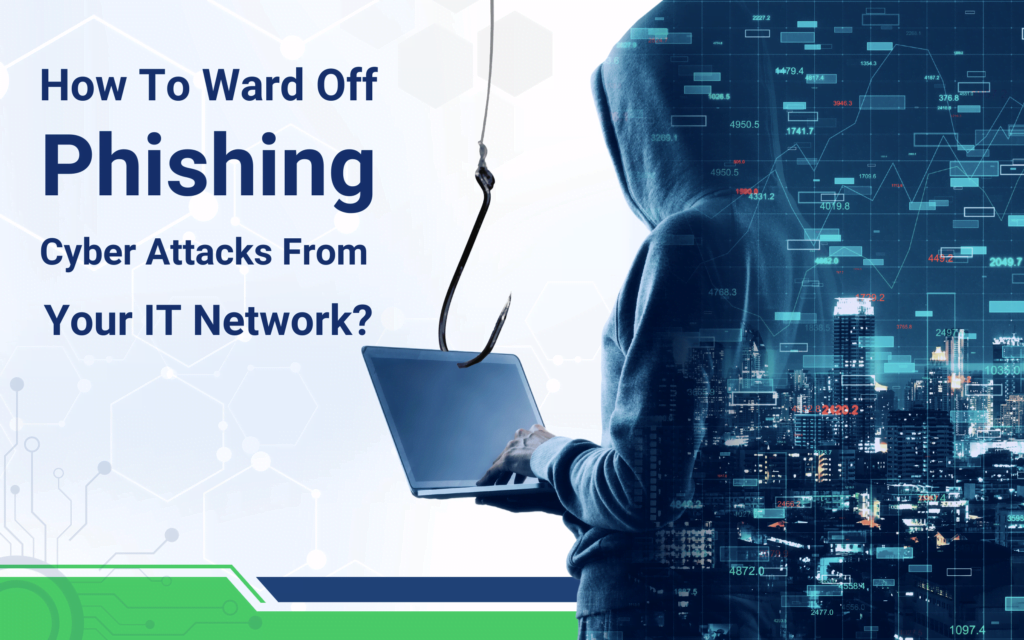Phishing Scams: Types, Prevention And Everything You Need To Know
We all know that living in the digital age comes with its own set of challenges, and one of the biggest ones is dealing with pesky phishing scams.
Phishing scams are like online fishing; cybercriminals try to reel you in using sneaky tactics to steal sensitive information. It’s a data engineering attack that can leave you and your business with a complex challenge.
So, what can you do to protect your enterprise from these online predators?
We’ve got you covered. Keep reading to learn all about how to stay safe in the digital world!
Table of Content
–Phishing Scams: What are They?
– Spreading Awareness: Types of Phishing Scams
– Preventing Phishing Scams in IT Industry
– Manage IT with Enhanced Security
– Frequently Asked Questions
Phishing Scams: What Are They?
Phishing scams are fraudulent attempts to obtain private data & information such as passwords, credit card details, and other personal information. These scams often involve an email that appears to come from a reputable source, such as a bank, social media platform, or even a government agency.
Phishing scams are often designed to trick the victim into providing their information by creating a sense of urgency or fear. For example, an email might claim that there has been a suspicious moment on the victim’s account and that they need to take immediate action to prevent further damage.
According to a report by the Cyber Security Agency of Singapore, there were over 2,700 reported cases of phishing attacks in 2020.
One of the most common and well-known types of phishing scams in Singapore involves using fake job offers; this resulted in an estimated loss of over $5 million, and over 2,000 cases were reported in 2022. Cybercriminals send phoney job offers to individuals, ask for personal information, or even request payment for a work visa or other related expenses.
These scams come in different forms and are increasingly becoming sophisticated. Therefore, it is critical to be conscious of these scams and know how to prevent them.
Spreading Awareness: Types Of Phishing Scams
● Deceptive Phishing
It is the most common type of phishing scam. The attacker creates a fake website or a fake login page to trick users into revealing their login credentials or other sensitive information.
For Example-
You can receive an email from your bank asking you to log in to your account. The email contains a link that takes you to a fake login page that looks like your bank’s official page. You enter your login credentials, which are then captured by the attacker.
● Spear Phishing
It is a targeted attack that is tailored to a specific person or organisation. The attacker uses personal information about the victim, such as their name, job title, and other details to create a sense of trust and legitimacy.
For Example-
An attacker is possible that he/she may send an email to a company’s financial department, posing as the CEO and requesting a wire transfer to a specific account. The email may contain the CEO’s signature and other personal details, making it seem legitimate.
● Whaling
Whaling is a phishing attack targeting high-profile individuals, such as CEOs or senior executives. The attacker may use social engineering tactics, such as posing as a legal authority or someone from the company’s board of directors, to gain the victim’s trust.
For Example-
A fraudster may email the CEO of a company, posing as the company’s legal advisor, requesting confidential information or a wire transfer.
● Smishing
Smishing is a phishing attack that covers the use of text messages instead of emails. The fraudster sends a text message containing a link to a fake website or login page, tricking the victim into revealing their sensitive information.
For Example-
You may receive a text message from your bank asking you to log in to your account by clicking on a link. The link takes you to a fake login page that captures your credentials.
Preventing Phishing Scams In IT Industry
Phishing attacks can be costly and time-consuming to deal with. Here are some prevention strategies that can be used to avoid these types of attacks:
Employee Awareness Training
Employees need to be educated on how to identify phishing emails and what to do when they come across one. Companies should have regular training sessions on how to identify and report phishing scams.
Verify The Sender
Always verify the sender’s email address before responding or clicking on any links. Sometimes attackers use email addresses similar to legitimate ones, so be vigilant and look for any discrepancies in the email address.
Using anti-phishing software can help detect and prevent phishing scams. The software can scan your emails for suspicious links or attachments and alert you if there is any potential threat.
Keep Your Software Up To Date
Ensure that your operating system, web browser, and antivirus software are up to date. This will help protect you from known vulnerabilities that attackers may exploit.
Encryption
Encryption is a technique that involves converting sensitive information into code that is difficult to decipher. Companies can use encryption to protect sensitive data from being accessed by attackers.
Enable Two-Factor Authentication- Security
This double-checks of security shoulders the responsibility of an extra layer of security by requiring a second form of verification before accessing your account. This can prevent attackers from gaining access even if they have your login credentials.
Manage IT With Enhanced Security
How Can You Identify Phishing Emails?
Phishing emails can be challenging to identify because they often look like they come from legitimate sources. Here are some key factors to look out for when trying to identify phishing emails:
- The email is unsolicited and unexpected.
- The email asks for sensitive and private information
It’s Your Turn To Secure Smartly!
To prevent falling victim to these attacks, it is essential to be vigilant and cautious of unsolicited emails, links, and requests for personal information. Always verify the source and do not click on URL links or download attachments from unknown sources. Stay abreast of the latest phishing scams can also help in staying protected.
Remember, “think before you click” to avoid becoming a phishing scam victim. So get ready to onboard your IT security service seamlessly!
Frequently Answered Questions (FAQ’s)
The three phases of phishing are the setup phase, the delivery phase, and the exploitation phase.
- Planning phase: The attacker identifies and researches their target and devises a plan to launch the attack.
- Execution phase: The attacker sends the phishing email or message and tries to persuade the victim to provide sensitive information.
- Follow-up phase: The attacker uses the stolen information for personal gain or sells it on the dark web. They may also launch additional attacks against the same victim or others.
These three phases are critical for understanding and preventing phishing attacks.
Phishing attacks can be carried out using a variety of tools, but some of the most commonly used ones include email spoofing software, fake websites, and social engineering tactics. Attackers often use sophisticated software and techniques to create convincing email and website replicas that trick users into sharing their personal information or clicking on malicious links.
In addition, hackers may use social engineering tactics, such as impersonating legitimate organisations or individuals, to gain trust and access sensitive data. It is essential to stay vigilant and educate yourself on how to identify and avoid phishing attacks.
Anti-phishing tools are software applications designed to protect users from phishing attacks, which are fraudulent attempts to obtain sensitive and private information such as usernames, passwords, and credit card details. These tools use various techniques to identify and block phishing emails, websites, and links, including email filters, web filters, browser extensions, and URL analysis.
They also offer features such as real-time alerts, phishing simulations, and user education to help users identify and avoid phishing scams.
Anti-phishing tools are essential for individuals and organisations that want to protect themselves against the growing threat of phishing attacks.
One way to test employees for phishing is to conduct simulated phishing attacks. This involves sending fake emails that mimic a real phishing attempt and monitoring employee responses. The results can be used to identify areas for training and improve overall security awareness.
Other methods include security awareness training and regular reminders about best practices for identifying and avoiding phishing attacks.
Additionally, monitoring network activity and implementing multi-factor authentication can also help prevent successful phishing attacks.

